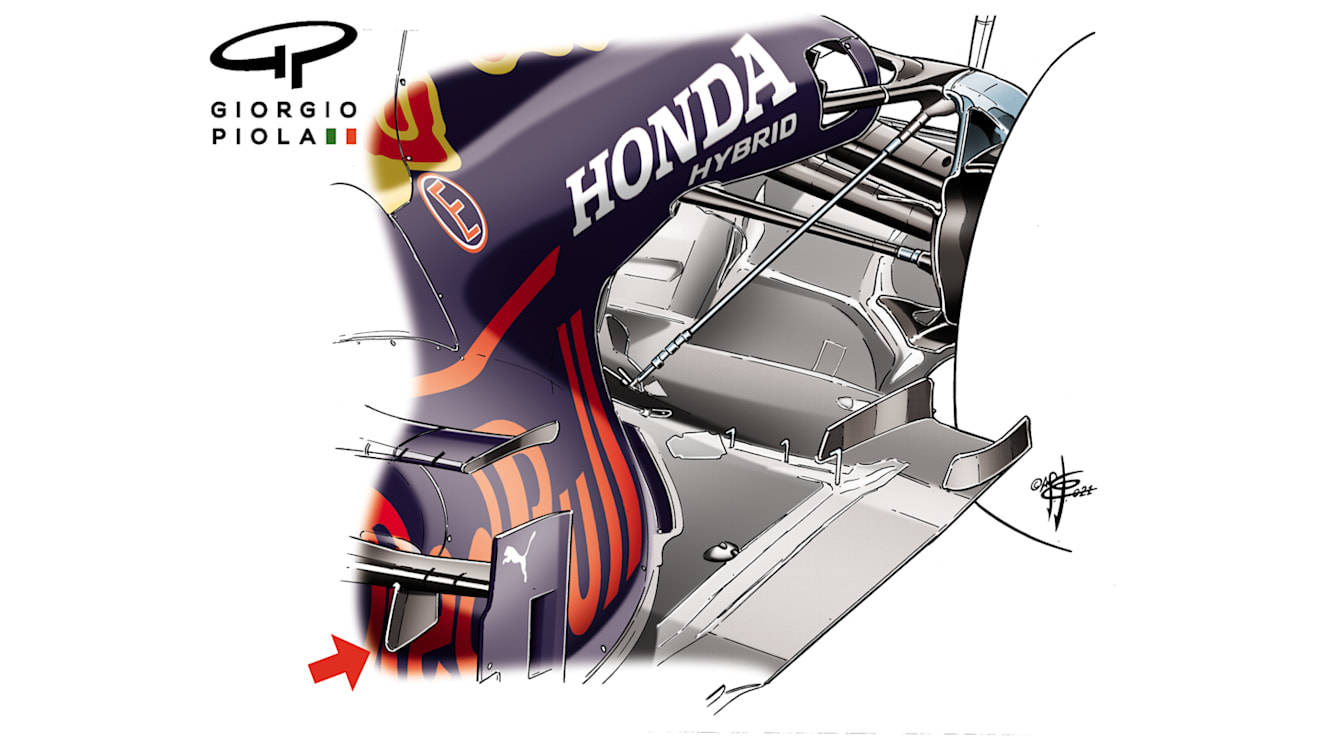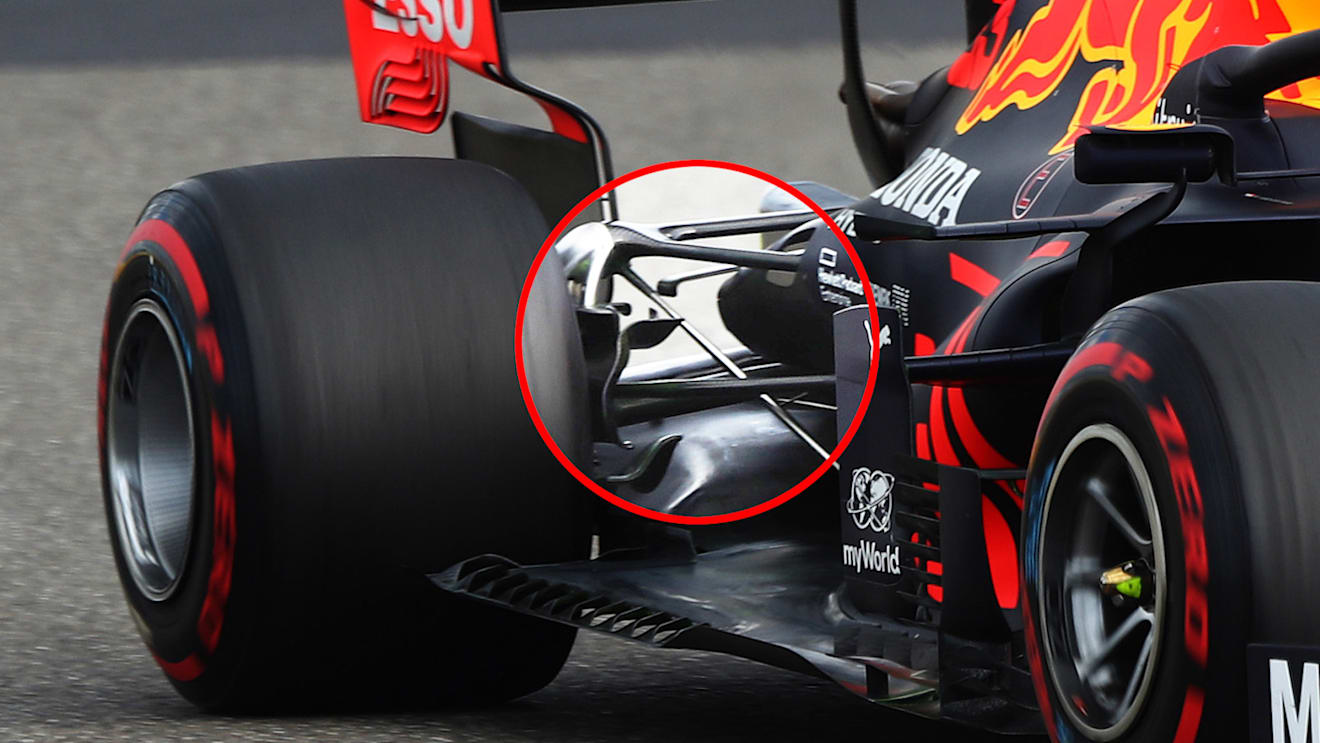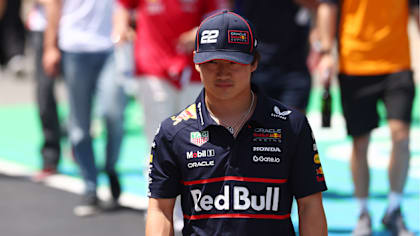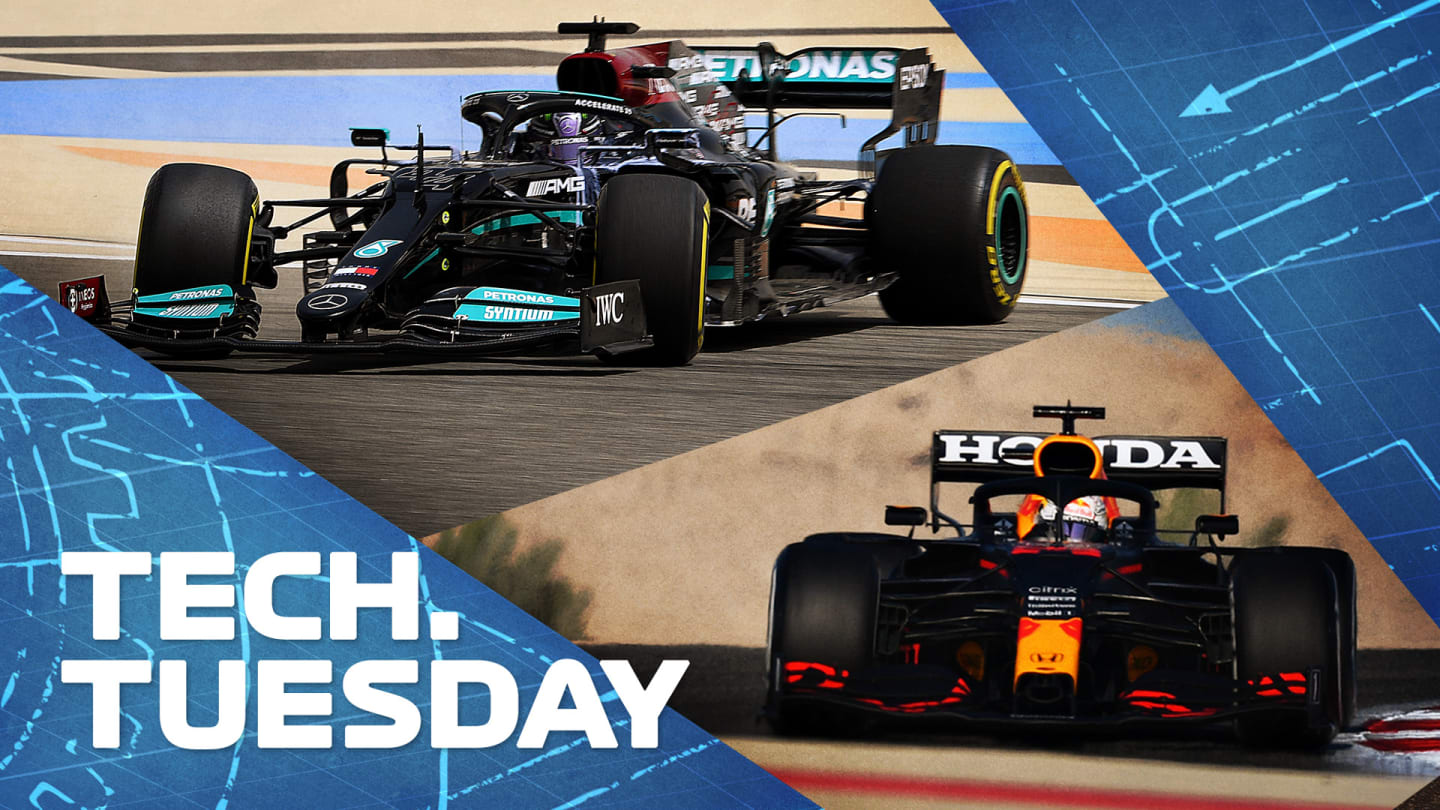
Technical
TECH TUESDAY: Have the 2021 rule changes swung the advantage from Mercedes to Red Bull?

Share

The big question arising from Bahrain testing was whether the Red Bull-Honda RB16B really was faster than the Mercedes W12 as Max Verstappen headed the times on the final day, with Lewis Hamilton back in fourth and complaining of a car with some rear instability. In our first Tech Tuesday feature of the year, Mark Hughes takes a look at the technical battle at the front of the grid in 2021, with illustrations from Giorgio Piola.
What seems apparent is that the cut-back floor regulations of this year have played a part in mixing up the initial competitive order, with Mercedes now working flat-out to understand and correct their problems before the Bahrain Grand Prix kicks off the 2021 season at the end of the month.
EXPLAINED: The revised aero regulations for 2021
Low-rake Mercedes vs high-rake Red Bull
Rake angle refers to the ride height of the car, rear to front, with some teams raising the rear of the car relative to the front much more than others, which is known as 'high-rake', as opposed to 'low-rake', when the rear is lower.
It’s only in hindsight it can be speculated that the change in floor regulations may have had more of an effect on the low-rake Mercedes than the high-rake Red Bull. Before the test, there were two competing theories about the way it might play out between the two philosophies and the teams had no way of knowing which would hold true, as they only have data on their own cars.
One theory said that the high-rake machine, in working the aerodynamic surfaces harder around the back of the car, would take more of a hit when a crucial chunk of those various surfaces was removed and that the low-rake car, conceived to give a better spread of downforce across the range of operating conditions and with lower peaks, would be more tolerant of the floor chop.

The image shows how the regulation on the floor has been changed for 2021
The alternative theory was that the low-rake Mercedes, which compensates for the lower expansion rate of the floor by having a longer wheelbase and therefore more floor area, would take more of a hit because it was losing a greater surface area of floor.
The downforce generated by the underfloor is a multiple of the negative pressure it creates (less on a low-rake car) and the area of floor that negative pressure is working upon. The more total negative pressure (pressure per unit of area multiplied by the area), the more downforce.
WATCH: Tech Talk at Bahrain testing – Tracking 2021's big technical changes
At high speeds, the difference in rake angle between the two types of car reduces as the rear of the high-rake car is forced down on its suspension by the downforce. In such high-speed corners the short high-rake car might be expected to generate less total downforce the long low-rake car – because it relies upon the difference in rake to compensate for its smaller floor.
But at low speeds, where the difference in rake is at its greatest, the high-rake car can more than compensate for its shorter floor. So long as the airflow can be kept attached when the rear of the car is so far from the ground.
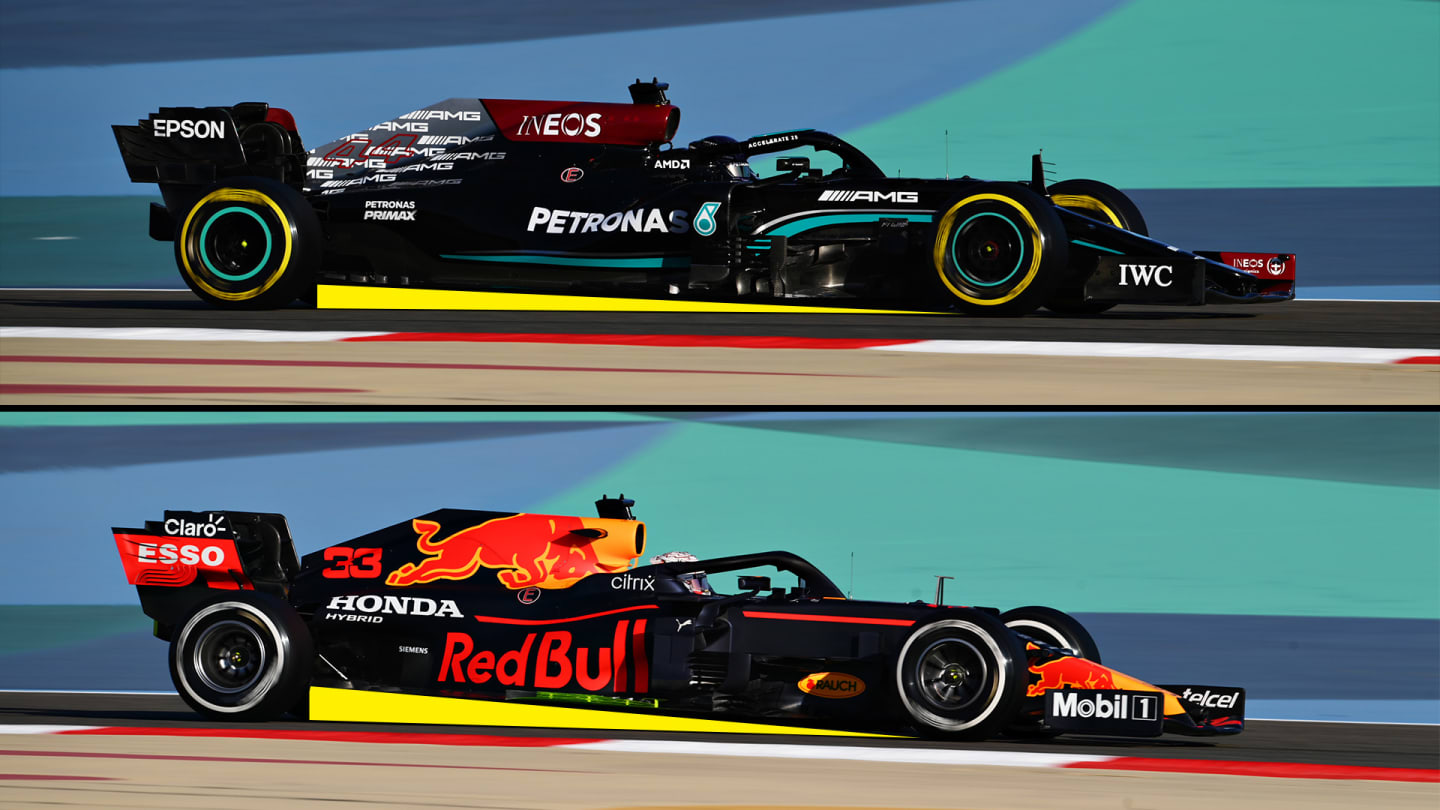
As this comparison shows, the RB16B has a greater rake angle than the W12
Last year Mercedes went to quite extreme lengths in their rear suspension design to generate more downforce from the rear by increasing the space through which the airflow could travel at that crucial part of the car between the rear tyres and diffuser.
They did this by sweeping the lower arms of the rear suspension back. The enhanced airflow increased the load on the rear tyres enough that the front of the car could be loaded up more without the rear snapping into a time-consuming slide.
WATCH: What’s the order heading into 2021? Jolyon Palmer's verdict on all 10 teams after testing
It finally allowed Hamilton to set the car up with the positive turn in he had sought in vain ever since the ‘big car’ regulations of 2017 came in. Between 2017 and '19 the Merc’s length had helped give it great high-speed downforce but had also made it little unresponsive on slow corner entry. With the greater rear stability of last year’s car, the front could be made more responsive without fear of upsetting the rear.
Might the cut-back floor regulations have robbed the Mercedes of enough of that rearward-biased downforce that it can no longer carry such an aggressive set-up on the front without it overwhelming the rear on corner entry?
WATCH: Hamilton suffered two spins at pre-season testing, but were they a result of the aero changes to the W12?
Red Bull's rear suspension update
Red Bull have this year has taken a leaf out of Mercedes’ 2020 book and also sought to sweep the rear suspension back – but have been restricted in how to do this by the '21 development token spend restriction. Nonetheless it’s believed they have managed an ingenious way of doing so while retaining the same mounting points.
It can be seen that the rear lower wishbone is now behind the trackrod whereas before it was in front. In just the same way as Mercedes did last year, this will have increased the volume of space through which the airflow can pass between the inner face of the rear tyre and the diffuser wall.
This is particularly crucial at low speeds on a high-rake car and it’s quite feasible it has found Red Bull even more benefit than it did Mercedes last year.
1 / 2
Furthermore, the Red Bull’s shorter wheelbase means it has always been less prone to the lazy direction change into slow corners suffered by the Mercs of 2017-19.
If the high-rake RB16B has compensated for the ‘21 floor restrictions by a stronger rear end from the suspension change while Mercedes – which already had the swept back lower rear suspension in ‘20 – has been unable to do so, then it might be why we saw a Mercedes with a rear stability problem and a Red Bull with a planted rear end. The exact opposite of most of last season.
READ MORE: 6 Winners and 6 Losers from 2021 F1 pre-season testing
Furthermore, in slow corners the low-rake concept may be unable to lend the Mercedes the rear end aero support it needs in compensating for the reduced floor area. Whereas the airflow resultant from the Red Bull’s high-rake floor (enhanced by its new swept-back suspension) could be robust enough to make that aggressive front end response perfectly feasible without upsetting the car’s balance.
Those are the theories and question marks heading into the first race. For Mercedes is it just a question of tweaking the set-up around the new airflow? Or does that new airflow fundamentally disadvantage it against a Red Bull that has suddenly been energised? We will get a clearer picture on where they are relative to each other once battle commences for real at the Bahrain Grand Prix at the end of the month.
YOU MIGHT ALSO LIKE
Feature FACTS AND STATS: McLaren’s first Spanish 1-2 for a quarter of a century
News Piastri ‘proud’ to bounce back with victory in Spain as he hails ‘weekend I’ve been looking for’
Live Blog AS IT HAPPENED: Piastri wins Spanish GP ahead of Norris as Verstappen and Russell make contact late on
News OFFICIAL GRID: Who’s where in Spain as Stroll withdraws and Tsunoda starts from pit lane

